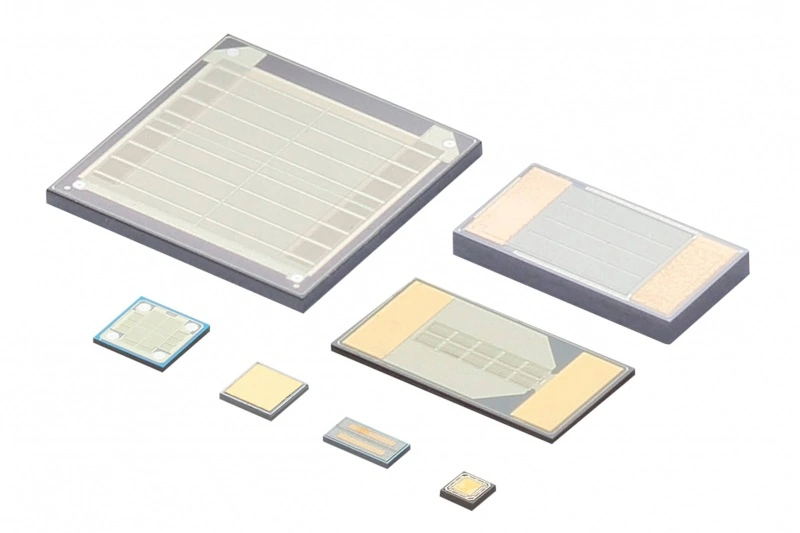I. Introduction
Capacitors play a crucial role in electronic systems, providing energy storage, filtering, and signal coupling capabilities. Among the various types of capacitors available, silicon capacitors have gained significant attention for their unique properties and applications. This article provides an in-depth exploration of silicon capacitors, shedding light on their construction, working principles, characteristics, applications, selection considerations, and future trends.

II. Understanding Silicon Capacitors
Understanding the construction and working principles of a silicon capacitor provides a foundation for grasping its functionality in electronic systems. By utilizing the properties of silicon and the characteristics of the dielectric layer, silicon capacitors enable the storage and release of electrical energy. These capacitors find extensive use in a wide range of applications, including energy storage, signal filtering, voltage regulation, and timing circuits. The advancements in silicon capacitor technology continue to drive innovations in electronic devices, facilitating enhanced performance and efficiency.
III. Construction and Working Principles
Construction of a Silicon Capacitor
1). Silicon Substrate
2). Dielectric Layer
The dielectric layer is a vital component of a silicon capacitor.
It is typically made of silicon dioxide (SiO2) or other dielectric materials.
The dielectric layer is deposited or grown on the silicon substrate.
3). Metal Electrodes
Metal electrodes are placed on both sides of the dielectric layer.
Common electrode materials include aluminum or copper.
The metal electrodes establish electrical connections and allow for charge accumulation and dissipation.
Working Principles of a Silicon Capacitor
A. Charging Process
1). Voltage Application
When a voltage is applied to the terminals of a silicon capacitor, it creates an electric field across the dielectric layer.
The positive terminal attracts electrons from one metal electrode, causing an excess of negative charge.
Simultaneously, the negative terminal repels electrons to the other metal electrode, resulting in an excess of positive charge.
2). Charge Accumulation
The electric field induced by the applied voltage causes charge accumulation within the dielectric layer.
The charge accumulation leads to the development of an electric potential difference between the metal electrodes.
B. Discharging Process
1). Voltage Removal
When the applied voltage is removed or reduced, the electric field across the dielectric diminishes.
The stored charges begin to redistribute in an attempt to neutralize the potential difference.
2). Release of Stored Energy
During the discharging process, the stored energy is released as the accumulated charges move back towards equilibrium.
This release of energy occurs in the form of an electric current, which can be utilized to power electronic circuits or devices.
Capacitance and Charge Storage Mechanism
A. Capacitance
The capacitance of a silicon capacitor is a measure of its ability to store electrical charge.
It is determined by various factors, including the physical characteristics of the dielectric layer and the surface area of the metal electrodes.
B. Charge Storage Mechanism
In a silicon capacitor, charge storage occurs primarily at the interface between the dielectric layer and the metal electrodes.
The dielectric layer acts as an insulator, preventing the direct flow of electrical current while allowing for the storage of electric charge.
IV. Characteristics and Performance of Silicon Capacitors
Silicon capacitors are manufactured using semiconductor manufacturing techniques, and their dielectric layers are silicon materials with better stability. Compared with the current mainstream capacitors, silicon capacitors have better capacitance density, reliability, and high-frequency characteristics. The aging time can be as long as 10 years, and its rated temperature can even be as high as 250 ° C. It has better performance in harsh environments. Performance.
However, the current price of silicon capacitors is dozens of times that of ordinary MLCCs, so its application range is concentrated in high-value-added, cost-insensitive cutting-edge medical equipment and other fields. However, considering the advantages of silicon capacitors in terms of thinness and lightness, silicon capacitors are also quite a good choice for smartphones whose internal space is increasingly stretched. Murata's silicon capacitors can be as thin as 0.05 mm.
V. Applications of Silicon Capacitors
Silicon capacitors find applications in a wide range of electronic systems and industries. Some common areas where silicon capacitors are used include:
Telecommunications: Silicon capacitors are employed in telecommunication systems for signal conditioning, filtering, and impedance matching. They are used in RF circuits, antennas, transceivers, and other communication components.
Power Electronics: Silicon capacitors are widely used in power electronics applications such as power supplies, inverters, converters, and motor drives. They help with energy storage, voltage regulation, and power factor correction.
Consumer Electronics: Silicon capacitors are found in various consumer electronic devices, including smartphones, laptops, televisions, and audio systems. They contribute to voltage smoothing, signal processing, and noise reduction.
Automotive Electronics: Silicon capacitors are utilized in automotive electronic control units (ECUs), engine management systems, lighting systems, and other automotive applications. They provide voltage stabilization, noise suppression, and protection against electrical disturbances.
Industrial Equipment: Silicon capacitors are used in industrial automation, robotics, machine tools, and control systems. They help with power conditioning, noise filtering, and maintaining stable voltage levels in industrial environments.
Aerospace and Defense: Silicon capacitors are crucial components in aerospace and defense applications. They are used in avionics, satellites, radar systems, missile guidance systems, and other critical electronic systems that require high reliability and performance in harsh environments.
Medical Devices: Silicon capacitors find applications in medical equipment and devices, including patient monitoring systems, imaging devices, diagnostic equipment, and implantable medical devices. They contribute to precise signal processing, power management, and safety.
Research and Development: Silicon capacitors are also used in laboratories and research facilities for various experimental and testing purposes. They can be employed in prototype circuits, test setups, and measurement systems.
VI. Selection and Considerations
Selecting the appropriate silicon capacitor involves careful consideration of several factors. Capacitance and voltage requirements should align with the specific application needs. Additionally, the equivalent series resistance (ESR) and frequency response of the capacitor should be compatible with the desired frequency range. Temperature range and environmental considerations, such as humidity and vibration, should also be taken into account to ensure optimal performance and longevity.
VII. Advances and Future Trends in Silicon Capacitors
Ongoing research and development efforts aim to advance the field of silicon capacitors. Miniaturization and integration techniques enable the production of smaller and more compact capacitors with increased capacitance density. Enhanced performance and reliability are pursued through material advancements, manufacturing techniques, and design optimizations. Staying informed about the latest advancements and trends in silicon capacitors can help engineers and designers unlock new possibilities in electronic system designs.
VIII. Conclusion
In conclusion, silicon capacitors offer unique characteristics and benefits that make them an integral part of modern electronics. Their construction, working principles, characteristics, applications, and selection considerations are essential aspects to understand for successful integration in electronic systems. By recognizing the importance of silicon capacitors and staying informed about their advancements, engineers can harness their potential to enhance the performance, reliability, and efficiency of electronic designs.

Nantian Electronics a professional distributor of electronic components, providing a wide range of electronic products, saving you a lot of time, effort and cost through our meticulous order preparation and fast delivery service.
Share this post


